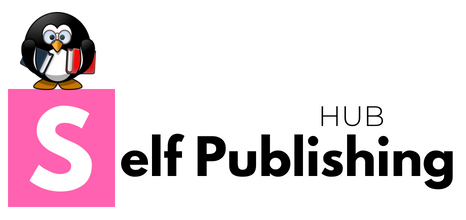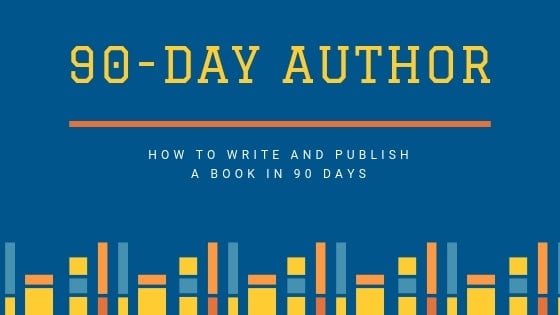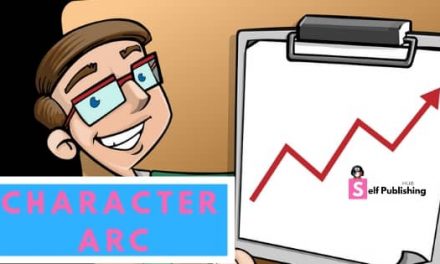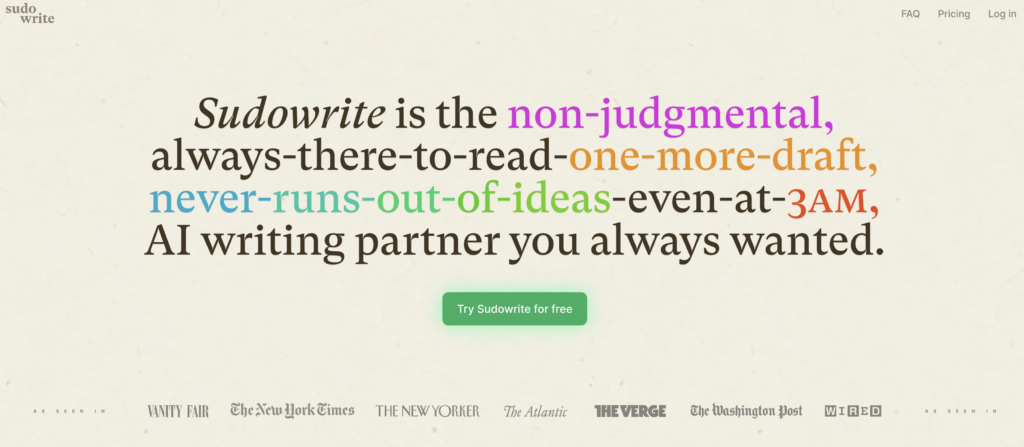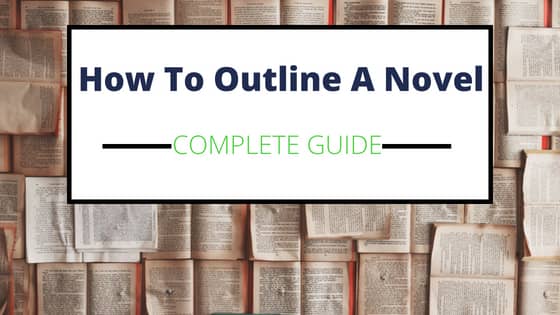Disclosure: The content on this site is free. Some of the links below are affiliate links from companies like Amazon.com and if you click the links and make a purchase we will receive a small commission at no additional cost to you. Thank you in advance if you decide to support our site by using our affiliate links!
Are you are one of the 200 million or a staggering 81% of Americans who say they would like to write a book someday? Read more about the survey here. In this guide, we will walk you through step by step on exactly how to write a book in 90 days.
Well, let me start off by saying as crazy as those numbers sound, the mere fact that you are taking the first step of researching, how to take action, puts you ahead of about 99% of those 200 million people. Ok, so I don’t have exact evidence on that last number, but trust me it’s not far off.
People say they want to do things all the time, but actually doing them is another matter. Take me for instance, I acknowledge a need and desire to start working out again pretty much daily, but I’m sitting here writing this post instead. But, in all seriousness, it may be a small step but it’s one you’ve already taken towards getting your book written.
You may be wondering, can you actually write a book in 90 days? The answer is yes, you absolutely can write a book in 90 days if you are determined, willing to put in consistent hard work, and have a well-defined process in place to guide you from start to finish.
The rest of this guide is focused on giving you the exact steps to follow, from start to finish, to write a book in 90 days. Our 90-day book writing plan accomplishes the following:
- Maximizes productivity and creativity
- Lays out a daily process for success
- Holds you accountable
- Delivers a quality novel
- Allows you to publish a book in 90 days
Let’s get started helping you write your next bestseller!
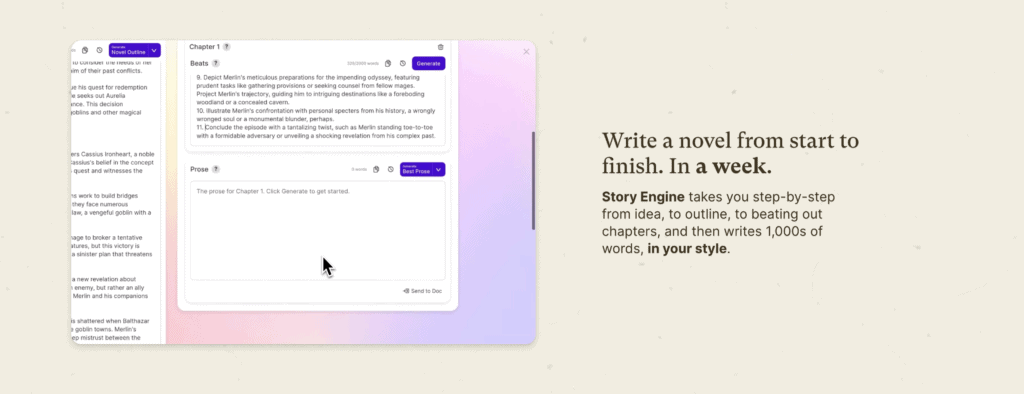
Article Topics
Intro: Why You Should Write Your Book in 90 Days
Ok, this isn’t exactly a step in writing your book, so feel free to skip to step one if you have no interest in this section. But a lot of people might be wondering why they should write a book in 90 days, so I wanted to touch on this in case you are one of those people.
The truth is 90 days is a bit arbitrary, and if you take more than 90 days to write your book you certainly wouldn’t be alone, in fact, some writers take years to write a book.
There is nothing wrong with that. You can still use this exact guide if you want to give yourself more time, just extend the timeline accordingly.
But 90 days was chosen for a few reasons:
- 90 days is enough time to write a good quality book, and if you aren’t going to set out to write a great book, what’s the point.
- I want to help change a task (writing a book) from something that is notoriously easy to procrastinate and avoid accomplishing into something more of those 200 million people take action on.
- Parkinson’s Law: Loosely the law has been extrapolated to mean the time available to complete a task will be exactly how long it takes to complete.
If you think of this in the construct of writing and self-publishing your book, the only deadlines we have are the ones we self-impose. If we want to turn writing a book from an idea of something nice that you might do one day, into a tangible action that delivers a tangible book, you need to commit and take it head-on like any other project. It’s amazing how changing your vocabulary from: “I’d like to write a book one day” to “I’m going to write a book in the next 90 days” can change everything.
So say it with me: “I’m going to write and publish a book in 90 days.” Once you’ve written your first one, you will know you can write more and you can tweak the process as you see fit.
Now let’s get started on showing you how you can fulfill that 90-day book writing promise.

Step 1: Identify Your Why Behind Writing A Book
This may seem hokey but DO NOT SKIP this step. Even though we have drastically cut down on the time it takes to start and finish your book with our 90-day book writing guide, it is still going to be hard work.
You need to know your WHY. This is crucial if you are going to push through and actually complete it. You will have times during the process where everything is flowing smoothly, and times when self-doubt is so strong that you will want to quit.
This is a concept that Simon Sinek has made famous with his Ted Talk. Watch this video if you want to know more about why finding your WHY is so important, as you set off to write your book.
Take the time to write down you WHY. Remember this should go deep to the core of your purpose. If you can tie writing and publishing your book to your true WHY, there is nothing that can hold you back from completing it.
Take time to think through your WHY and write it down. Pin it up somewhere you will see it every morning. This will drive you through the tough times, through the writer’s block, and most importantly through the self-doubt and fear that would otherwise cause you to scrap your book before it’s done.
Here are some questions to ask yourself when you are coming up with your Why?
- What do I want from life?
- What can writing offer you that nothing else can?
- What is at stake?
- What does accomplishing this mean for me and my family?
- Why am I compelled to write?
Step 2: Find Your Inner Writer’s Happy Place
In this step, you will want to focus on a little introspection to find your core as a writer. I know that sounds really nebulous, however, I want you to focus on a few specific tangible elements of writing that will help you through the remainder of your book writing journey.
When Are You Most Creative?
Be honest with yourself. Understand when you are the most creative. If you are a morning person then you will want to know that and plan accordingly when you are coming up with your writing plan. Often times we fall into the trap of not prioritizing our writing, we feel lucky if we just fit it in around our day jobs and competing responsibilities.
But remember the goal is to write something great in 90 days. To give yourself the best chance of writing a successful book, we want to optimize the conditions for success. Putting you in front of your keyboard when the words are free flowing will make it that much easier.

Describe an Optimal Creative Environment
We all have different working environments in which we excel. Take all that personal knowledge and describe what your creative happy space looks like.
Take note of anything that hinders your productivity. Keep that out of your writing space when we start setting that up.
What Type of Books do You Enjoy Reading?
It stands to reason that the books and stories you enjoy reading most should probably line up with the book you intend to write.
Take a minute to rank your favorite genres, and make a list of your top 3 books in that genre. Write down what you like most about those books. This is the bar you should strive for when you set out to write your book.
Write down what you like most about the characters, plot, pacing, and tone. This will most likely naturally translate into your writing. But when you start to stray or feel your writing meander a bit, you can pull out this top three list, and quickly get yourself back on track.
What Do You Want Your Writing to Say About You?
Understand what you want to your writing to say about you as an author. You might know this straight away or you might need to take a few minutes to thank about this. Write it down. This is another great mirror moment to look back at while you write.
You are ultimately the only judge when it comes to answering this question. It will also help you know when your book is done. If it represents what you want your writing to say about you, then it’s probably pretty close to being done.
Step 3: Set Up Your Optimal Writing Space

Ok, you’ve now done a lot of the introspection when it comes to understanding what you need to be a successful writer.
Now it’s time to set up up your writing space. This is critical. Remember you will be spending a lot of time here over the next 90-days, and hopefully longer than that as you continue to produce more and more books moving forward.
Here are 11 tips for setting up your optimal writing space:
- Pin Up a Copy of your WHY statement.
- Remember your inner writer’s happy place from step 2- this is what you are striving to create!
- Almost as important, take a look at anything you identified in step 2 as a hindrance to your productivity or creativity, make sure nothing from that list makes it anywhere near your writing space.
- Make sure you have a comfortable chair and desk. Sitting and typing for long periods of time can play havoc on your health and joints, so make sure you are in a good writing posture.
- Make sure the lighting is easy on your eyes. You will be looking at your screen and notes for a prolonged period of time, make sure it’s easy to read without straining your eyes.
- Try to minimize clutter. It has been proven that cleaner, more organized workspaces help with productivity.
- Make sure you have some sort of temperature control. You will want to make sure you can keep the writing temperature where it’s comfortable but not too warm. You don’t want to be shivering, but don’t make it so toasty you want to take a nap.
- Try to have space that you can close off to outside distractions. A door that closes is ideal so you can limit noise and interference from other people in the house.
- Try to make this the dedicated writing space. If you have space that is only used for writing, your brain will start to transition into writing mode more quickly when you sit down. You will know that when you sit down at the desk it is time to get words on the page.
- Put up some genre specific or general writing inspiration to keep the good writing vibes flowing.
- Minimize distractions. Try to keep the writing as the only focal point in the room. The fewer options there are to procrastinate or time waste, the better off you will be.
The key is creating a writing sanctuary. If yours is outside on a park bench, then so be it. But you need to be able to access that sanctuary during designated writing times and once your there you need to make sure there are limited distractions that can hinder your writing flow.
Eventually, you can even talk to tax professional about potentially writing off your office on your taxes. I’m not an accountant, so definitely consult with one before making any decisions about that.
Step 4: Assemble Your Writing Tools

Luckily writing is something that you can do and be great at without a lot of fancy tools. With that being said, some of you may still use an old feather quill and ink to write the next great hit novel, but most of you are probably using a computer.
The most important thing to remember when assembling your writing tools is that the tools need to fit your process. Remember how you dreamed up your ultimate writer sanctuary, well in that writing layer you were probably surrounded by the tools that made you feel the most comfortable and productive. Now is the time to make sure you get those together.
Here is a basic list of things you will need when writing a book. I will keep this brief and to the point, take what is important to you.
- A Writing Processor: Ok so if you are at your best writing by hand in a notebook, then DO THAT! That is way better than trying to learn how to use a computer for the first time while trying to learn how to type more than 3 words per minute as you set off to write this book in the next 90 days. For those of you who prefer to type out your book, then you will need writing software. You can write your book on whatever software you have on your computer. Word is the most common. I would suggest you actually use a word processing system designed specifically for authors. I highly recommend Scrivener for far too many reasons to list here. Get Scrivener 3 Here It’s cost-effective and will help you research and organize your writing better than anything else I’ve found. Read my full Scrivener review to find out why it’s the best choice for writers.
- Note System: You can do all your notes right in Scrivener and that’s what I do 95% of the time, but I still default to the old pen and notepad when I really need to get my head and hands around a plot problem. So make sure you have some type of note-taking system in place.
- Dictation Software (Completely Optional) This is not necessary at all, but I will tell you I’ve started using Dictation software more and more to accelerate my writing even further. You can absolutely get your book written in 90 days without this, but Dictation may allow you to cut it down even further. We talk way faster than even the fastest typists. So you can imagine, you can get a lot more words on the page during each writing session if you are using dictation. There is a learning curve and you might want to hold off on it for the same reason I gave about trying to learn a new system when you are trying to be creative and crank out a full book in 90 days. You don’t want something that will break you out of your creative state. Not all dictation software is created equal, I use and recommend Dragon. It’s a little pricey but well worth it if you plan on doing a lot of writing. Especially if you suffer from any medical issues like carpal tunnel. Read this article on why Dragon is the best dictation software for authors if you want to learn more.
- Editing Software: Good Editing software will help you clean up your drafts faster. This is especially important if you are doing all the editing yourself. But even if you plan on getting another person to edit your novel, (which I highly recommend) editing software can help clean up your draft so your editor can look for story/plot issues and not spend all their time on line-edits. I recommend Grammarly which has a free and paid version. Both are good. Read more about why I think Grammarly is one of the best editing software options around.
- Big Coffee Mug (or Tea if your in that type of mood) – This is just a personal preference. But I think by huge coffee mug has become my best friend. I love having a hot cup of tea or coffee when I’m writing. It helps get me in the mood. I hated running out of coffee and having to decide whether or not to get up for a refill or just keep writing without it. (CHOOSE KEEP WRITING WHENEVER POSSIBLE). So my mug has become an adult comfort blanket of sorts and I love it.
That’s about it, in the end, if you have a way to get the words on paper or digital paper, then you have what you need to be a writer. Yes, you can accelerate the process with some additional tools, but a lack of fancy writing tools should never become a reason you don’t write.
Step 5: BrainStorm Story Ideas For Your Book

I know you most likely have a burning idea in your head, or maybe even a few. Most people do and that’s usually impetuous enough to finally take action and write a novel. This may end up being the novel you decide to write, but Brainstorming your book ideas in this section is still important.
This will help you come up with a list of potential books you can write in the future. It will also take one more pass at vetting the idea you are currently mulling over. Make sure you take the time to free flow ideas here. I like to do this on a whiteboard so I can walk around, or on a notepad.
If you need some story ideas to kick you off- take a look at our evergrowing series of 500 story prompt ideas to get started.
- Give yourself a set amount of time to brainstorm- I recommend 30-60 minutes
- Begin writing them down as you think of them.
- If you are co-writing a book with someone else, or have another writer you collaborate with, this session should turn into a free-flowing verbal dump of ideas.
- Don’t dissect or second guess your ideas during this time. Just write them down!
- The goal is to have a board or paper filled with your ideas for book concepts at the end of your allotted time.
Step 6: Vet and Select the Winning Story Idea for Your Book

Remember how I said there is no such thing as a bad idea in the previous step. Well, the truth is there is no such thing as a bad idea when it comes to brainstorming ideas, but now that you have a solid list of book ideas it’s time to vet them.
The goal book idea vetting phase is two-fold. 1) Weed out the bad ideas so you are left with a smaller more manageable list of good ideas. 2) Dig into the good ideas to find a true winner, one that really excites you and will compel you to finish!
There is no wrong way to do this. But I will walk you through a series of exercises you can put your novel ideas through that might help you pick the winning book idea, and more importantly be confident in your choice all the way through completion.
Every writer is excited about a new book idea when they come up with it, the really special ideas keep you interested throughout the writing process and amp up the excitment even futher when its over.
- Take a look at all your brainstormed book ideas- Score each of them from 1-10 based on how excited you are to write that book. Base this on your initial gut response to the idea. Write that number next to each of the book concepts you came up with.
- Repeat the exercise but this time score each of the concepts based on how excited you would be to READ a book about this topic. It may seem redundant but you would be amazed at how this helps to eliminate certain novel ideas really quickly.
- Now that you’ve taken a visceral pass each of your story ideas from two different angles. Add up the two numbers next to each idea and circle the total.
- Take the totals and use them to narrow down your book ideas to a top 3. Some people can go to a top 5 if you absolutely can’t narrow it to 3 book ideas at this point. But 3 is better. We will now use this 3-5 top book ideas down further to pick your winning story concept.
- Now going to rate each of your finalists 1-10 based on how commercial the idea seems. I know this might feel icky to the purest of you out there. But the goal is to write a great book that has a huge market and actually gets enjoyed by readers. So this step is really important. If you have a great idea that is a bit too esoteric, well you can still write that idea, but you may want to pick a more commercial concept if you want to garner widespread appeal. So rank each of your top book ideas from 1-10 in the following areas:
- Consider the genre is on the upswing, decline, or steady- 10 for a thriving genre, 1 for a genre that comprises pretty much you.
- Is it in a hot niche right now- 10 for this is the hottest thing since sliced bread, 1 for a niche that died with the dinosaurs
- Has the concept been overdone? 10 for this is an amazing concept that has never been done anywhere, 1 for a concept that induces uncontrollable eye-rolls
- How would this book fit into your brand as a writer? (Yes this counts if it’s your first book because you are creating a brand) 10-perfect, 1- you wrote what?
- How complicated is this concept to pull off in comparison to your current skill level? 10- I could nail this in my sleep, 1- there is no way in hell.
- Once you have rated each of your top book ideas – add up and circle the total. Which book idea has Risen to the top?
- Take a step back from this little exercise and take a few minutes to really think deep about the idea that rated out #1. Ask yourself:
- Anything you are missing?
- Are you still excited about writing this book? More/Less than when you started
- Picture yourself sitting at a keyboard for the next 90 days working on this book- How does that make you feel?
- Can this book help you move towards your WHY? (Yep told you it’s important.)
Again, this concept might feel like overkill to some of you. But it’s something I’ve refined over time. I probably tweak it a bit each time I do it, but it walks me through the process. Make this process your own, improve it. But if you take the time to walk through it, you should feel confident you have a winning book idea on your hands.
One that you will execute on and complete to the end of the process.
Step 7: Articulate the Theme of Your Book, and Do Your Research
Now that you’ve picked your story idea. Take a moment to clearly articulate your theme. This should be something that you can explain simply in one sentence. This is what your story is about.
Some people confuse plot with a theme. But the plot is what happens in a story, but not what the story is about. So you need to write down what your story is ultimately about. This will be the core or bones of your story.
Stay true to your theme throughout the rest of the writing process. Everything should stem from your theme.
Research:
Collect your research for the novel. If you have anything that needs to be researched, make sure you start to find and gather that research now, so you can call on it as you write. If you are using Scrivener, it makes it easy to store your research right in your story binder.
Step 8: Identify and Develop the Main Characters in Your Book & Establish Point Of View Choices

There are many different elements of fiction a writer has at their disposal when writing a story, but none are more important than character. Read this to learn more about all the elements of fiction.
Characters are the lifeblood of your story, without well-developed characters the rest of your story elements are meaningless, ok maybe that’s a bit of hyperbole but not by much.
What you want to accomplish in this critical prewriting step is to fully develop and understand your characters at the deepest levels. Some people will question why we are focusing on character development before the plot, but this is done purposefully.
Here are the advantages of developing your characters prior to your plot:
- Understanding your characters fully will help make better decisions when it comes to your plot.
- A lot of books fall short in that they fail to have your character’s arc work in parallel to your plot. When done correctly, your character should change and develop throughout the book by making conscious decisions throughout the story that show personal growth and drive the plot forward. By developing your character arc first, you can make sure your plot works in tandem with your character arc.
Develop Your Character Arc
What is character arc? A character arc is an inner journey or emotional growth a character will undergo through the story. The plot points of the story are merely the vessel to undertake that emotional growth.
In order to write a compelling story, you need to fully understand your characters at the deepest level. With that, you need to understand the emotional state they are starting the novel in, and the juxtaposition that they will have at the end of the novel. This will help inform your decisions throughout the novel.
The character arc should be tightly woven with the plot and story structure of the novel. The events in the novel should help to usher your character through his transformation. Make sure your character isn’t passive throughout the novel but making active decisions at crucial moments that show their personal development.
Remember all the other elements of fiction lose their impact if you don’t have well-developed characters that the reader believes and cares about. So you need to ensure that you craft your main character arcs from the very beginning.
Know your characters arc prior to outlining the plot and constructing a story structure.
- Take the time to map out your main character arcs now. Is your character starting out a coward and ending as a courageous hero? From incompetence to competence? From selfishness to selflessness? There are a ton of different character arcs. Just know what your character’s arc is and that will make it much easier to achieve when you are writing your book.
If you are struggling with character development. The urge might be to skip this step, or at least rush it and leave it incomplete. You can read this complete guide to character development for more help.
Do not skip this step or any of the pre-writing steps. You are excited and want to jump right into the story. We all do. But the excitement of a great opening scene we become a distant memory if you don’t take the time to develop your characters.
The amount of time you may save on the front end by skipping character development and outlining, is nothing compared to the countless wasted hours you will waste paying for that error later in the writing process.
Take your time, understand your characters fully and you will thank me for it later. More importantly, your readers will thank you for it when they fall in love with your characters and come clamoring for more.
Remember how we said that character arc and plot go hand and hand? Well, when you are developing your character arc you should start to consider your story structure. This will help you take your character arc and build in the key emotional development areas that need to happen with your character and kind of overlay with your the main plot points in your story structure. Then when you are outlining your novel, you are merely picking the best events that help move the story along while accomplishing aiding in your character arc.
If you don’t know exactly what story structure you want to use, you can build the details to your character arc when you are outlining, but it’s definitely nice when you have that all fleshed out already.
Some people find it easier to interview their characters to learn their entire backstory prior to creating their arc. If you want help interviewing your characters, read our article on 100 questions for your character development worksheet.
Once you have fully developed your main characters their character arcs, move on to the next step.
Point of View:
Start to think about the point of view you want your novel written in. This will really depend on the which characters perspective you want the story told from.
If you want to know more about Point of View, read our article on 3rd-person point of view.
Step 9: Pick Your Story Structure and Outline Your Story
This may be a step of contention with many writers. Many writers call themselves Pantsers and hate the idea of outlining a novel. I know the urge might be there to resist outlining your story.
Most of the time we want to get into the writing, and we mistakenly think of time spent in preproduction as time wasted. But let me tell you this couldn’t be further from the truth. Having an outline will not stifle your creativity, you still have the room to take the story where it needs to go in your writing, however, outlining your story ahead of time will definitely cut down on writer’s block and dead time.
When we are writing a novel in 90 days, time is of the essence. So we want to lay out the path to a complete and fulfilling story in the outlining phase and give those broad strokes definition and life during the writing phase.
I would also argue that if you are reading this guide, you are probably more wired to having a process in place, and outlining will be all the more important to you as a writer.
Story Structure.
There are endless ways to structure your story, and in the end, you need to make whichever structure you choose your own. However, having a structure picked out will ensure you have a story that builds action and suspense throughout, giving your readers a satisfying experience.
Here is a great video that illustrates 10 different ways to outline and structure your novel.
Outlining Your Book
There are other ways to outline and structure your novel as well. So if you have a preferred method use that method! You should try to match the story structure to the type of story you are trying to tell, but you can accomplish a great story with any of these methods.
Here is an article breaking down 5 outlining methods. If you sign up for our mailing list, you will get 5 free outlining Scrivener templates to get you started.
Here is our ultimate guide to outlining your novel in 5 different ways.
The key is once you know your outlining and story structure method, simply take the time to make a list of scenes that occur throughout the book. Make sure you have all the major plot points worked out, and that they correlate to your character arcs.
Step 10: Break Up Writing a Book into Smaller Goals & Set Key Deadlines
Writing a book is a big undertaking. Even if it is only 90 days. There is a lot of work that needs to be done to get to the finished product.
So we want to turn a big task into a bunch of smaller tasks. It’s hard to say I’m going to write a 50000-word book. There is a reason the old saying is the way you eat an elephant is one bite at a time.
Psychologically this will help you have consistent daily goals that you can work towards. Hitting daily goals will give you momentum to continue the project. Now books can be any length. Full-length novels usually go between 50-100K words. So this will depend on the type of story you are trying to tell and exactly how many words it takes to tell that story effectively.
But I will walk you through an idea of how you can break up your writing goals. Remember we are dealing with a 90-day goal for writing your book. So let me start off by giving you an idea at the overall timeline.
Below you will find a guide for you to use when you are building out your bite-size goals and setting your book publishing goals. During this step you should:
- Break your big goal of writing a novel into smaller daily goals
- Create a full production timeline.
- Write the deadlines down on a calendar
- Share the timeline with any outside help, like editors.
How to write your book in 90-days- High-level Timeline
Setting the Stage for Success Writing Your Book (Complete Steps 1-4, Time: 1-2 Weeks: This is not part of the 90 days)
This part of our guide is not part of the 90 days, as you may already have a lot of this stuff in order. You can think of this part of the book writing timeline as setting the stage for success.
- Complete Steps 1-4 in this How to write a book in 90-days Guide. Don’t spend too much time and money on this, but make sure you take the time to set yourself up for longterm success as a writer. Try to complete these steps in 1 week, but if you need to take 2 weeks that’s fine. Any longer than that, and you might risk getting distracted or worse yet lose something of that motivation that is so key to writing your book.
90-DAY CLOCK STARTS HERE
Book Preproduction Work: Find the Core and Develop the Guts to Your Story (Complete Steps 5-10, Time 7 Days)
This is where you build the foundation for a successful book. You will map out what you need to get the writing done from beginning to end in this section. This is a section where you could likely a day or two to the proposed timeline, but if it’s done correctly could save you way more than that on the back end.
The goal is to finish preproduction work of picking a story idea, mapping out your character development, and outlining your story in 7 days.
- Day 1-2: Complete Steps 5 & 6 & 7
- Day 3-4: Complete Step 8
- Day 5-7: Complete 9 & 10 (YOU ARE HERE!!!)
Book Production: Writing Your First Draft (Complete Step 11 Writing the First Draft, Time 30 Days )
Let’s assume you want to write a novel that is about 50K words. This is where breaking up your big goal into smaller pieces comes into play.
It’s simple math. What you want to do is figure out the total word output you want to achieve with your book and simply divide it by 30 days to finish your first draft.
In the 50,000-word book example:
50K words / 30days = 1667 words per day – That is your goal here. Just follow your outline and write your first draft accordingly. To give you an idea- This article is already closing in on about 6K words. So it is very doable.
Rewriting (Complete Step 12 Rewriting 2nd Draft, Time 10 Days) HALF WAY MARK 45 DAYS
- Writing is rewriting. The first draft was all about getting the words on paper. Now the second draft is cleaning up the prose and making it sound pretty.
Developmental Edit/(Cover Made &Outline Book Launch) (Complete Step 13, Time 7 Days)
- At this point you have a second draft complete, you will want to pull in a developmental editor to read the book and give you any plot holes that need addressing
Rewrite 3rd Draft (Complete Step 14, Time 14 Days)
- Based on feedback – Time for more rewriting.
Final Edits/Finish Book Launch Strategy (Complete Step 15, Time 10 Days)
- Have someone line edit your 3rd draft, to clean up any grammatical problems or typos. You should have already cleaned it up as best you could by this point.
Final Draft (Complete Step 16, Time 7 Days)
- Complete the remaining edits and finalize your final draft
10 Flex Days Until Launch (This is a Buffer Built into really prepare for launch. But You can pull from here throughout the 90 days as needed)
Once You have Your Bite-Size goals are set, Book any help you need in your timeline.
You may have noticed that there are couple points in the timeline where you will need to get the help of outside readers and editors. Assuming you aren’t paying these people, you want to be really cognizant of their schedules. Well actually if you are using a paid editor it’s just as important since they book out way in advance.
So once you set your deadlines, make sure you reach out to the people that will be helping you and be specific!! Give them the dates you just laid out on the calendar!! Ask them to commit to helping you and explain your tight timeline!
Plan ahead to stay ahead!
Step 11: Time to Write The First Draft of Your Book
This step is exactly what it sounds like. You are going to spend the next 30 days focused on meeting that daily word goal you set out in the previous step.
In our example of a 50K word novel. Your goal is to write a minimum of 1667 words every single day. The first draft you want to focus on getting the story on paper. Don’t spend time self-editing.
Here are some tricks to hitting your daily word count goals when writing the first draft of your book.
- Turn off your editing software during the first draft
- Don’t read your previous line, just move forward with the scene.
- Don’t worry about making your dialogue overly eloquent. Just get the gist of the conversation down, and then you can refine during the rewriting phases.
- Think about dictating your first draft- You will know out a lot more words in a shorter period of time. You can then clean it up in future drafts. Read our Dragon Review of the Best dictation software for writers if you’re interested
- Try breaking up your writing time into mini 20-minute sprints. With a small break in between. These writing sprints can really help you crank out more words.
Here are some helpful articles on common writing questions:
- How to use Direct and Indirect Characterization in Your Writing
- How to Write and Punctuate Dialogue in a Book
Step 12: First Rewrite- Write the 2nd Draft to Your Novel
Most writers will tell you that writing is re-writing. Now that you’ve plowed through 30 days of writing, you have a completed first draft on your hands.
During this step, you get to go back over your draft and clean up the scenes. Focus on making your scenes and dialogue crisper and cleaner. This is a great time to make sure you polish your prose.
Step 13: Development Edit/Cover Design & Book Launch Schedule
- In this step, you want to get your latest draft to the developmental editor you booked earlier in the process. You want them to give you feedback on plot and story gaps. This is where your editor should tell you any areas where your story falls short. Does your character do something that doesn’t make sense, or did you contradict something that happened earlier?
- While your Editor is reading and giving notes on your draft. You want to either design your own book cover if you are a designer. Of have one made. You can have a decent one made cheaply on Fivrr.
- Once you have a book cover ordered, Plan out your book launch promotion. You will want to try to have promotions each day during your launch.
Step 14: Rewrite Your 3rd Draft
Take the developmental edits and write your 3rd draft. This is a chance to clean up your novel even further. Close up any plot holes that the development edit found. Tighten up any gaps in your story.
Step 15: Final Copy Edit/Finalize Your Book Launch
Have an editor provide a full line edit. It’s important to have someone else check your work for punctuation and typos.
The second set of eyes is huge when it comes to publishing a quality product. Make sure you are having someone that excels in grammar do this if you can’t pay for an actual line editor.
Finalize your book launch schedule while your editor is working on your draft.
You may also want to create an author website so you can use it to build your author platform in anticipation of your book launch.
Follow our ultimate guide to creating an author website to learn how.
Step 16: Final Draft and Publish
Complete your final rewrite once you receive your edits and PUBLISH YOUR BOOK!!!! Congrats you started off asking how to write a book and followed our 90-day book writing guide to write and publish your first book.
Conclusion: To Our How to Write a Book in 90 Days Guide:
I hope you have enjoyed this how to write a book in 90-days guide. Like any guide, you may need to tweak it slightly to meet your needs.
But ultimately I hope we have given you a good resource to exactly what is needed to write a book.
If you are looking for some inspiration while you are writing your book. I recommend you check out the 31 Top Podcasts for Writers and Self-published Authors for inspiration.
But the important thing now is that you take action. Start at step 1 and walk your way through the steps. Hold yourself accountable to your book writing deadlines. Focus on winning the small battles and celebrating the small milestones.
Write with reckless abandon until you are done. If you do, in 90 days you will have written your first book and be a published author!
Good Luck!
Thanks for Reading and More importantly Writing!
